
Genre of Nude in Painting: Evolution and Historical Trends of the Nude Style
The Nude Genre is a painterly genre in which the main emphasis is placed on the aesthetics of the naked body, both female and male. The artwork may have a narrative (often mythological, allegorical, historical), but these are mere settings. The artist is primarily interested in the aesthetic aspects of the body. Sometimes, people refer to paintings as being in the nude style, but this is not entirely accurate. It is more correct to speak of the nude genre, to which thousands of paintings belong, created in various styles.
 Nudes in painting. Titian. Venus of Urbino, 1534
Nudes in painting. Titian. Venus of Urbino, 1534
The term "Nude" comes from the French word "nudité."
Nude in Antiquity and the Middle Ages
Nude can be found in images created several thousand years before our era. Beautiful bodies in the nude genre are seen in ancient Egyptian frescoes: semi-naked dancers, naked servants, noble ladies in transparent attire.
 Nudes in painting. Dancing at a feast (Ancient Egyptian fresco)
Nudes in painting. Dancing at a feast (Ancient Egyptian fresco)
In the ancient era, classical canons of the nude genre in depicting the naked body were established, which later laid the foundation for Renaissance art.
Interestingly, ancient Greeks predominantly depicted nude male figures (by the way, many believe that nude is only associated with the female form, but this is not the case). Women in ancient Greek paintings are usually clothed, while men are often depicted nude.
 Nudes in painting. Ancient Greece. Menada and Satyr
Nudes in painting. Ancient Greece. Menada and Satyr
During the late antiquity, female figures began to be exposed more frequently. The most famous ancient frescoes in the nude genre featuring naked women were created in the early years of our era.
Nudes in painting. The Three Graces. (Pompeii)
In the Medieval era, sensuality in art was eradicated. Nudity rarely appeared in medieval drawings and generally symbolized the transience of the flesh. The situation began to change during the period of International Gothic, which preceded the Proto-Renaissance. However, it was only the Renaissance that removed the shackles from this theme, and the genre of nude began its triumphant march across Europe.
 Nudes in painting. Limburg Brothers. The Fall of Adam and Eve
Nudes in painting. Limburg Brothers. The Fall of Adam and Eve
The Genre of Nude in Classical Painting
The genre of nude during the Renaissance celebrated the human body, its harmony, and beauty. Artists saw in humanity the pinnacle of creation, a concept perfectly reflected in Michelangelo's male nudes (Michelangelo di Buonarroti).
 Nudes in painting. Michelangelo. The Creation of Adam, 1511
Nudes in painting. Michelangelo. The Creation of Adam, 1511
An important Renaissance trend was the increasing secularization in art, leading to the emergence of sensuality in painting. Works featuring cupids became increasingly erotic. In the genre of nude in the Late Renaissance, provocative poses emerged, sometimes becoming somewhat lascivious in the hands of Baroque and Rococo masters.
 Nudes in painting. Alessandro Allori. Susanna and the Elders, 1561
Nudes in painting. Alessandro Allori. Susanna and the Elders, 1561
The Baroque era introduced a lush corporeality, exuberant passion, and fiery sensuality to the genre of nude.
 Nudes in painting. Peter Paul Rubens. Venus Frigida, 1611
Nudes in painting. Peter Paul Rubens. Venus Frigida, 1611
This trend was most vividly expressed in the works of Peter Paul Rubens.
 Nudes in painting. Peter Paul Rubens. The Three Graces, 1630-1635
Nudes in painting. Peter Paul Rubens. The Three Graces, 1630-1635
Rembrandt's nude women also possess considerable allure.
 Nudes in painting. Rembrandt. Danaë, 1636
Nudes in painting. Rembrandt. Danaë, 1636
For the genre of nude in the Baroque era, passion and dynamism are characteristic. Seductive beauties with luxurious forms are seized, abducted, warmly embraced by men.
 Nudes in painting. Peter Paul Rubens. The Rape of the Daughters of Leucippus, 1617-1618
Nudes in painting. Peter Paul Rubens. The Rape of the Daughters of Leucippus, 1617-1618
The heyday of the nude genre occurred during the Rococo period. This style infused playfulness, frivolity, sensuality, and eroticism into the narratives. Painters enthusiastically tackled the most provocative myths.
 Nudes in painting. François Boucher. Leda and the Swan, 1741
Nudes in painting. François Boucher. Leda and the Swan, 1741
A different approach was taken by classicists and neoclassicists. Following the traditions of antiquity and the Renaissance, they emphasized not erotic heat but rather the harmony and perfection of humanity. Figures in their paintings were slimmer, more sculptural.
 Nudes in painting. Jacques-Louis David. Mars Being Disarmed by Venus, 1822-1824
Nudes in painting. Jacques-Louis David. Mars Being Disarmed by Venus, 1822-1824
The Romantic era brought a fashion for exoticism—odalisques, Eastern beauties. Academic and salon art embraced this trend, meeting a high demand from the audience for such works.
 Nudes in painting. Mariano Fortuny. The Odalisque, 1861
Nudes in painting. Mariano Fortuny. The Odalisque, 1861
Main Themes of the Nude Genre
Studying works in the nude genre reveals several typical themes that artists explored across different styles:
- Venus (Aphrodite) - the goddess of love. Within this theme, ideal for beautiful nudes, several popular subplots emerged, including "The Birth of Venus," "The Toilet of Venus," and "Venus and Mars." Typically, putti (cupids, erotes) are present, and nymphs often make appearances. Scenes of love involving male characters are also encountered.
- The Three Graces - another beloved theme for artists, allowing the demonstration of the beauty of female figures in movement, in dance.
- Frivolous scenes from mythology ("Leda and the Swan," "The Abduction of Europa," "The Abduction of the Daughters of Leucippus," "The Seduction of Callisto").
- Other legendary and historical themes, depicting characters without clothing or with minimal attire, appealing to ancient traditions (e.g., depictions of Artemis, Cleopatra).
- Adam and Eve. The theme of the Fall received various interpretations, with the sensuality of the painting depending on the artist's intent.
- Bathing scenes. Initially developed based on ancient legends and myths (various bathing goddesses, nymphs) and the Old Testament story of elders spying on Susanna. Gradually, within this theme, artists began to paint simply beautiful young women.
- Odalisques in harems, Eastern captives, the sale of slave girls, women in Eastern baths. This theme became highly fashionable in the 19th century, even overshadowing traditional mythological plots.
- Bacchanalian scenes. They granted carte blanche for the depiction of orgies.
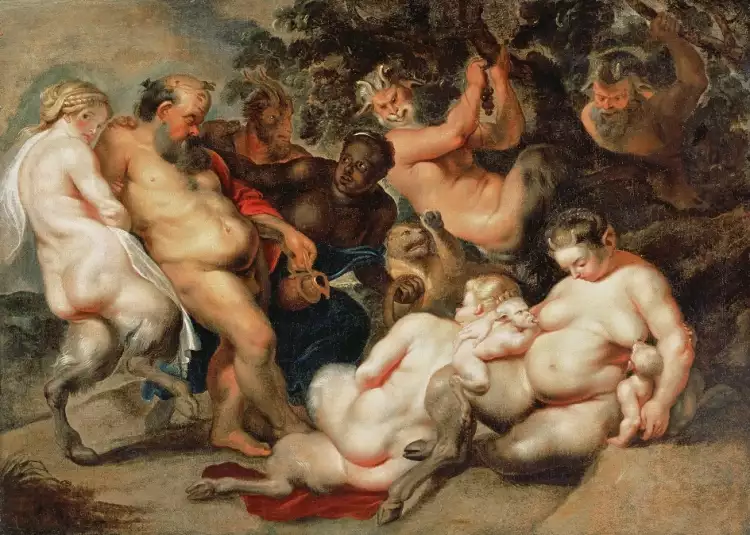 Nudes in painting. Peter Paul Rubens. Bacchanalia, 1615
Nudes in painting. Peter Paul Rubens. Bacchanalia, 1615
Nude - Edward Manet's Revolution
It should be emphasized that depictions of nudity of real women in classical painting were very few. There are only isolated exceptions - for instance, the semi-nude figures of Fornarina in Raphael's works or Gabriel d'Estrees with her sister, painted by an unknown artist. And this was not accidental. To paint nudity, artists required a peculiar indulgence: a reference to classical tradition, mythology, or history.
 Nudes in painting. Raphael. La Fornarina, 1518-1520
Nudes in painting. Raphael. La Fornarina, 1518-1520
A certain deviation occurred in the Rococo era - examples include spicy pastorals or resting girls by François Boucher. However, Boucher faced criticism for these liberties; after the death of his patron Madame de Pompadour, the master was accused of indecency.
 Nudes in painting. François Boucher. Odalisque, 1745
Nudes in painting. François Boucher. Odalisque, 1745
 Nudes in painting. François Boucher. Resting Girl, 1751
Nudes in painting. François Boucher. Resting Girl, 1751
All of this helps understand why a grand scandal occurred at the Paris Salon in 1863, opening a new page in the history of the nude genre. Édouard Manet's "Olympia" caused an uproar among professionals and the public. The model's hand was compared to a toad, the heroine herself to a female gorilla, and the artist was accused of cynicism and promoting debauchery. To prevent the destruction of the artwork, it was hung high on the wall. However, outraged viewers were not appeased and attempted to pierce the canvas with umbrellas.
 Nudes in painting. Édouard Manet. Olympia, 1863
Nudes in painting. Édouard Manet. Olympia, 1863
What happened? After all, Olympia's pose exactly corresponds to Titian's "Venus of Urbino." In the previous Salon, Alexandre Cabanel's "The Birth of Venus" was recognized as the best work. What was wrong with "Olympia"?
 Nudes in painting. Alexandre Cabanel. The Birth of Venus, 1863
Nudes in painting. Alexandre Cabanel. The Birth of Venus, 1863
The public was outraged because the artist dared to openly undress and place a real woman in bed, moreover, a prostitute. Furthermore, he did not add any embarrassment or coquetry, as was customary. He did not depict her sleeping or caught in a voyeuristic act. No, Olympia looks directly at the viewer, like a client: openly, cynically, boldly.
Another scandal was caused by Édouard Manet's "Luncheon on the Grass": the public was upset that the heroine - their contemporary - is depicted naked at a picnic, i.e., impropriety taken directly from everyday life.
 Nudes in painting. Édouard Manet. The Luncheon on the Grass, 1862-1863
Nudes in painting. Édouard Manet. The Luncheon on the Grass, 1862-1863
It is worth noting that Manet was not the first to boldly and realistically depict an unclothed ordinary woman. The first such work is considered Francisco Goya's "Naked Maja" - to some extent, it is even more naturalistic. But Goya prudently avoided scandal by creating "Clothed Maja" for the client: this canvas concealed the "criminal" painting.
 Nudes in painting. Francisco Goya. The Naked Maja, 1797-1800
Nudes in painting. Francisco Goya. The Naked Maja, 1797-1800
 Nudes in painting. Francisco Goya. The Clothed Maja, 1798-1805
Nudes in painting. Francisco Goya. The Clothed Maja, 1798-1805
Manet himself was very concerned about the negative reviews, but his paintings in the nude genre revolutionized it. Artists began to paint naked bodies more realistically and boldly. An outstanding example of this new approach was Boris Mikhailovich Kustodiev's (Russian: Борис Михайлович Кустодиев) "Russian Venus."
 Nudes in painting. Boris Kustodiev. The Russian Venus, 1926
Nudes in painting. Boris Kustodiev. The Russian Venus, 1926
Another revolutionary painting, also scandalizing society, turned out to be Pablo Picasso's "Les Demoiselles d'Avignon." They paved the way for an avant-garde perspective on the nude genre.
 Nudes in painting. Pablo Picasso. The Young Ladies of Avignon, 1907
Nudes in painting. Pablo Picasso. The Young Ladies of Avignon, 1907
20th-century art continued to seek new approaches to depicting the human body.
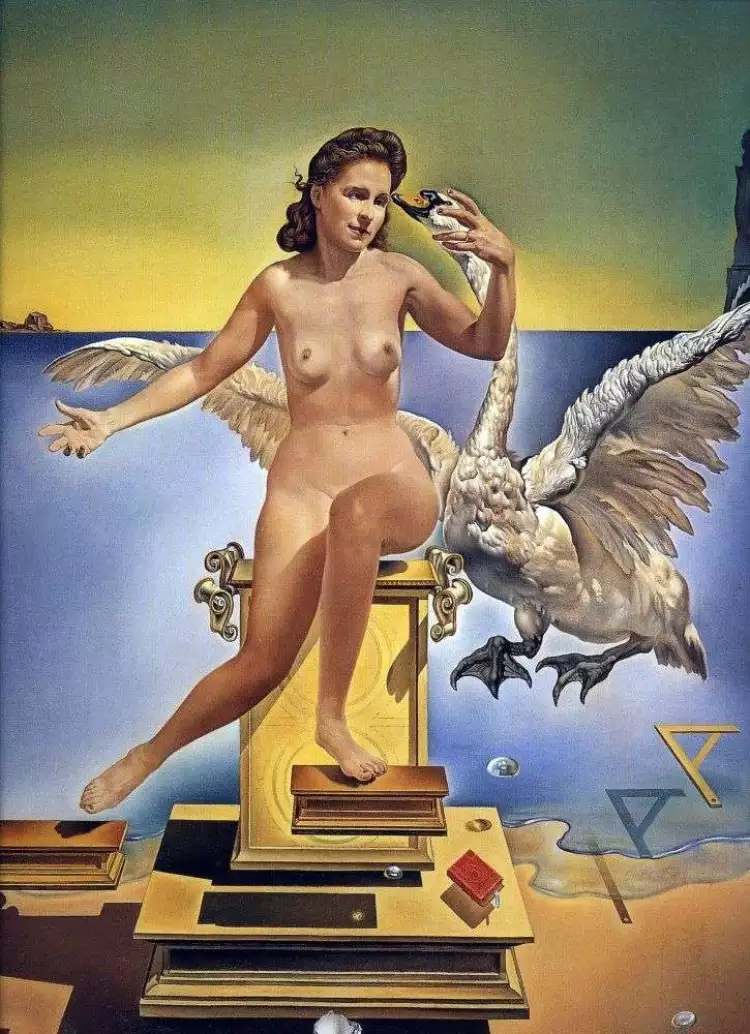 Nudes in painting. Salvador Dalí. Leda Atomica, 1949
Nudes in painting. Salvador Dalí. Leda Atomica, 1949
Some use an abstract style, while others go to the opposite pole, hitting naturalism - whether body-positive or satirical.
 Nudes in painting. Lucian Freud. Naked Man Back View, 1992
Nudes in painting. Lucian Freud. Naked Man Back View, 1992
However, there are still artists who paint nudes in a classical manner, glorifying beauty, harmony, and eroticism.
 Nudes in painting. Grigory Glukman. Nude, 1930s
Nudes in painting. Grigory Glukman. Nude, 1930s
And what do you think about nudes in painting - does it shock you or evoke admiration? Perhaps you would like to decorate your interior with a nude genre painting? Numerous works by old and contemporary masters depicting beauties or boldly shocking the viewer with eroticism are presented in the catalogs of our website. By participating in online auctions of contemporary art, you can assemble a unique collection of paintings.
 Sculpture is the unique art of creating three-dimensional artistic works
Sculpture is the unique art of creating three-dimensional artistic works  Animalism is a popular genre in painting from prehistoric times
Animalism is a popular genre in painting from prehistoric times 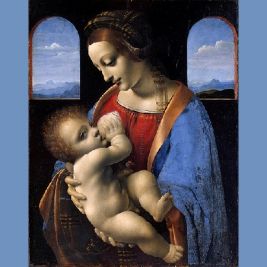 Renaissance is an era of great names
Renaissance is an era of great names  Engraving is a captivating art of creating printed images
Engraving is a captivating art of creating printed images 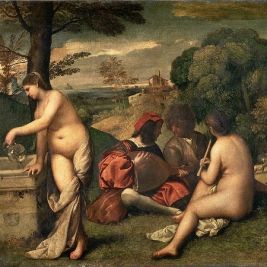 Pastoral is an elegant and carefree genre of art from the Baroque and Rococo periods
Pastoral is an elegant and carefree genre of art from the Baroque and Rococo periods 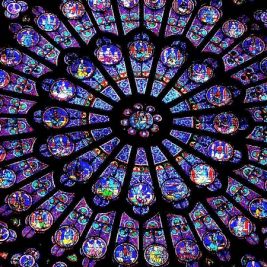 Stained glass is a grand masterpiece of monumental art made from small pieces of colored glass
Stained glass is a grand masterpiece of monumental art made from small pieces of colored glass 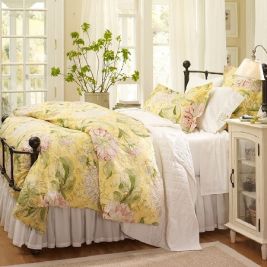 Romanticism style in interior design is characterized by classical elegance, softened with colors and lace
Romanticism style in interior design is characterized by classical elegance, softened with colors and lace  Caspar David Friedrich is the most famous and melancholic romanticist of German painting
Caspar David Friedrich is the most famous and melancholic romanticist of German painting 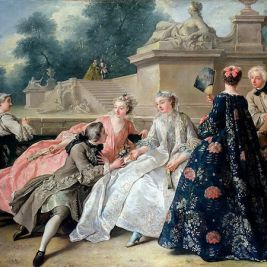 French Artists of the 18th Century
French Artists of the 18th Century 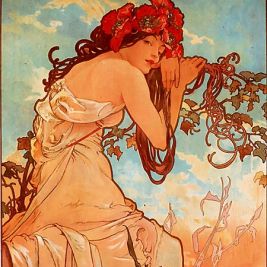 Art Nouveau is an international style in the visual arts
Art Nouveau is an international style in the visual arts